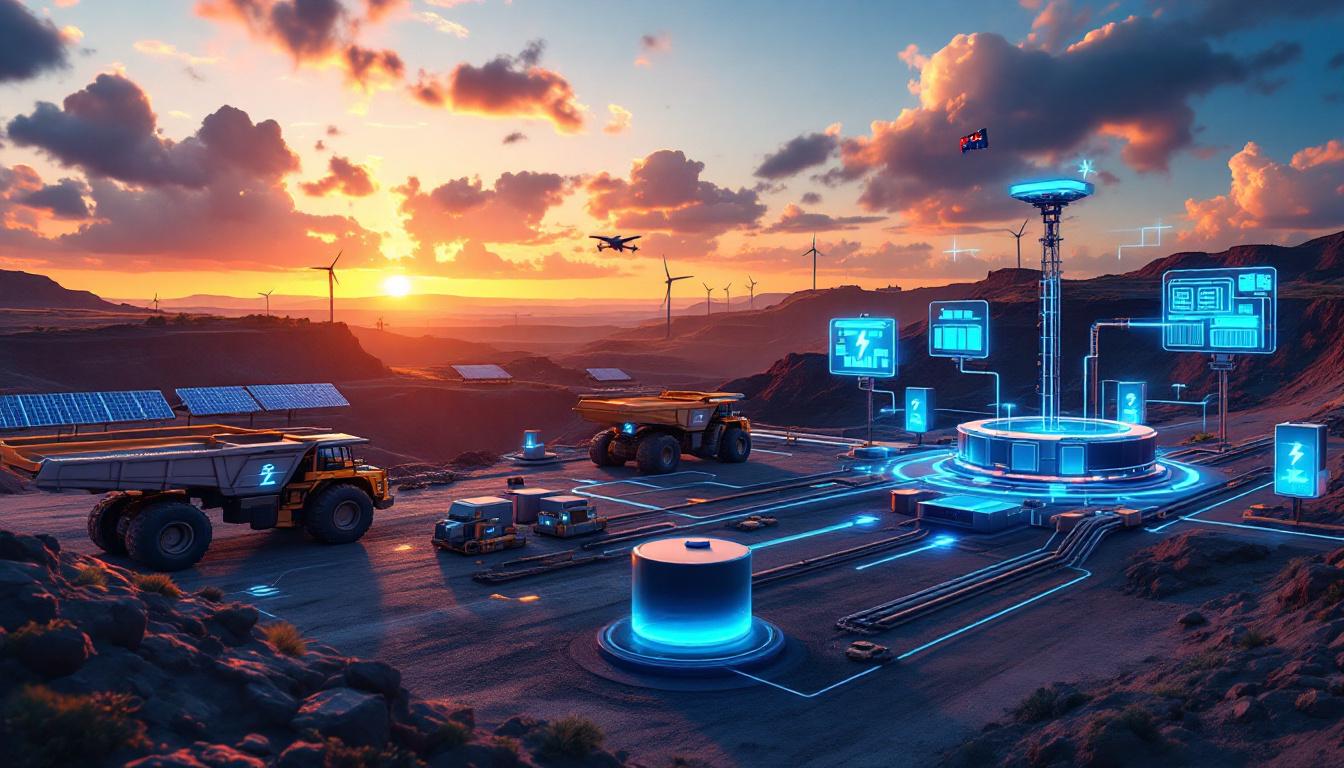What Is Driving the Urgency Around America's Critical Minerals Crisis?
America faces mounting urgency to secure a resilient supply of critical minerals—vital raw materials essential for national security, economic competitiveness, and the transition to clean energy. These substances, including rare earth magnet materials and lithium, underpin everything from electric vehicles and wind turbines to advanced defense technologies.
Why Are Critical Minerals Essential for the U.S. Economy and Security?
Critical minerals such as neodymium, praseodymium (key magnet metals), lithium, niobium, and beryllium are indispensable to U.S. industry and defense. The term "critical" refers to those minerals with high economic importance and a high risk of supply disruption. This necessity has fueled a demand for a fully integrated "mine-to-magnet" U.S. supply chain.
Key Figures and Facts:
- The historical Akbulak Project in Kazakhstan holds an estimated 380,000 tons of rare earth magnet metals (Source: InvestorNews interview, August 6, 2025).
- Kaz Resources, established in 2023, controls a portfolio of 13 active mining licenses spanning lithium, niobium, and beryllium reserves.
As Pini Althaus, Managing Partner of Cove Capital LLC, notes:
"Rare earths—specifically the key magnet materials—are a significant priority for us, as is lithium."
This highlights the strategic importance of these minerals in North American energy independence and technological leadership.
U.S. Policy Shifts to Address Supply Chain Vulnerabilities
Responding to growing risks, both the Trump and Biden administrations accelerated efforts to bolster domestic critical mineral production. Trump's critical minerals order marked a significant policy shift that continues to influence resource strategy today. As Althaus indicates:
"We're experiencing a very hands-on, practical approach from Washington to solving what is, frankly, a crisis in the United States."
The White House and State Department's material independence drive fuels bipartisan policy action, including direct investment and regulatory streamlining.
Key U.S. legislative and programmatic steps emphasize practical, implementation-focused initiatives—paralleling successful critical mineral approaches in Canada and Australia.
Trends Emerging:
- Enhanced government funding for mineral exploration and pilot-scale development programs.
- Stronger regulatory frameworks to fast-track mining and processing projects.
- Emphasis on public-private collaboration and early-stage technological innovation.
Where Are the Most Promising Critical Mineral Projects and Partnerships Emerging?
The search for reliable sources now extends beyond U.S. borders, spotlighting new resource frontiers and international partnerships with unprecedented strategic implications.
What Makes Central Asia Pivotal to Mineral Supply Chains?
Central Asia, particularly Kazakhstan and Uzbekistan, is emerging as a new focal point for mineral supply security. Regional governments have signaled openness to U.S. and Western partners—most notably in the Akbulak Project, a rare earth magnet metals venture.
Key Projects and Partnerships Table:
| Project | Resource | Key Commodity | Stage |
|---|---|---|---|
| Akbulak Rare Earth JV | 380,000 tons (historic) | Magnet Rare Earths | Pre-commercial |
| Kazakhstan Tailings | – | Lithium, Niobium, Beryllium | Pilot Development |
The Akbulak joint venture, with Tau-Ken Samruk (Kazakhstan's state resource entity), owns 75% of project rights—unlocking huge potential for U.S.-allied supply chains. Meanwhile, 13 active mining licenses across lithium, niobium, and beryllium further diversify the region's value proposition.
Pini Althaus highlights:
"Uzbekistan has expressed a very strong desire to have U.S. and Western companies develop projects there."
He also notes personal engagement, having met President Shavkat Mirziyoyev of Uzbekistan three times, underscoring the depth of U.S.-Central Asia collaboration.
Which Downstream Innovations Could Reshape U.S. Mineral Security?
Recycling and process innovation are rapidly advancing U.S. mineral security. Battery recycling innovations and magnet recycling stand out, with companies like REEMAG LLC piloting >85% recovery rates for rare earth magnet materials—a game-changing step toward domestic independence.
Featured Q&A:
Q: What is the main benefit of deploying advanced magnet recycling technology?
A: It enables over 85% recovery from end-of-life products, supporting supply chain independence and sustainability.
Strategic markets include Australia, India, and the United States, where recycling infrastructure is scaling rapidly. Over 100,000 tons of feedstock have already been sourced for initial recycling projects.
How Can Speed and Cooperation Accelerate Solutions to the Critical Minerals Shortage?
Meeting America's critical minerals demand requires agility and partnership—not zero-sum competition.
What Role Does Industry Collaboration Play in Overcoming Supply Bottlenecks?
Given the scale of U.S. supply needs, no single company can solve bottlenecks in isolation. Instead, the sector is moving toward open joint ventures, cross-licensing, and knowledge pooling.
As Pini Althaus emphasizes:
"Our only interest in other companies is how we can work together… I don't see competition. No one company has enough material to claim to solve all the supply-chain issues."
A structural challenge: Unlike Canada or Australia, the U.S. lacks a robust "junior-mining" ecosystem. Strategic partnerships and joint ventures aim to bridge this market gap and nurture early-stage innovation.
How Does Investment Timing Influence the Success of Critical Mineral Projects?
Counter-cyclical investing is a core strategy among resource-focused firms.
- Entering projects during bearish cycles (e.g., when lithium prices are low) allows for lower acquisition costs and higher future returns.
- Advancing projects in down-cycles locks in access to critical materials in anticipation of demand surges.
Investment Strategy Table:
| Market Sentiment | Typical Investment Strategy | Rationale |
|---|---|---|
| Bullish (high price) | Delay acquisition/expansion | High costs, lower ROI |
| Bearish (low price) | Advance acquisitions/new projects | Lower entry cost, future upside |
How Are International Standards and Partnerships Advancing Project Development?
Central Asian nations are reforming regulatory frameworks to attract U.S. partners, adopting Western operating standards. A notable case: The TMK mining vehicle, structured under Uzbekistan's new governance regime, sets a precedent for further collaboration.
What Strategies Are Being Used to Build Resilient, Low-Carbon Mineral Supply Chains?
Building future-proof supply chains demands a circular economy mindset—reducing reliance on primary mining and pioneering sustainable processing methods.
How Is Magnet Recycling Shaping the Future of Critical Mineral Supply?
The next-generation supply chain is defined by recycling initiatives, which cut emissions and ease pressure on virgin mining. Magnet recycling, in particular, demonstrates:
- Over 85% recovery rate of rare earth content from end-of-life products using innovative technology.
- More than 100,000 tons of rare earth magnet feedstock identified for first-phase recycling.
Featured Q&A:
Q: How much rare earth magnet feedstock has been sourced for recycling projects?
A: Over 100,000 tons across multiple continents.
What Are the Next Steps for Commercialization and Scaling?
Commercialization is accelerating through a disciplined, staged approach:
- Pilot Programs: Commencing with drilling, geophysical surveys, and pilot-scale processing (as detailed in the June 19, 2025, work plan).
- Expansion Funding: Plans for an ASX (Australian Securities Exchange) listing to finance the first dedicated recycling plant.
- Global Rollout: Targeted models for replication in North America, Asia, and Oceania.
"This is a coordinated step forward, aligned with Kazakhstan's resource-development goals, which include establishing a fully integrated supply chain and meeting U.S. and global critical-mineral needs."
— Cove Capital June 19th news release
Frequently Asked Questions About America's Critical Minerals Crisis
What Are the Top Obstacles Facing Domestic Mineral Supply Chains?
- Regulatory delays and friction in permitting new extraction and processing facilities.
- Insufficient U.S. refining and advanced processing capacity for rare earths, lithium, and battery materials.
- A shallow early-stage exploration ecosystem compared to mining hubs like Canada and Australia.
- Overwhelming dominance of foreign actors, especially China, in global rare earth processing and advanced battery materials.
What Are the Most Promising New Markets for U.S.-Allied Mineral Cooperation?
- Central Asia (Kazakhstan, Uzbekistan)—dramatically improving regulatory regimes and resource access.
- South Asia (India)—rising as a strategic market for recycled rare earth magnets, with India's lithium strategy gaining prominence.
- Near-term opportunities exist for future expansion into resource-rich Africa and South America.
How Can Stakeholders Get Involved in the Critical Minerals Value Chain?
- Strategic joint ventures with resource owners and operators.
- Cross-border technology partnerships and knowledge sharing.
- Direct project investments at all stages, from exploration to recycling.
- Participation in recycling supply chains and feedstock aggregation.
Industry leaders actively welcome engagement across the spectrum—collaboration is not just possible but essential.
Conclusion: Why Speed and Cooperation Matter Most—And What Comes Next
In the unfolding race for secure access to critical minerals, speed and cooperation in America's critical minerals crisis will define who leads and who falls behind. Success demands:
- Agility in project investment and regulatory approvals.
- Open partnerships and joint ventures to bridge supply gaps.
- Technological breakthroughs—most notably, high-recovery magnet recycling and direct lithium extraction methods.
- Persistent engagement and adaptation as geopolitical, technological, and market dynamics evolve.
Continuing commitment from government and industry will be crucial to overcoming legacy vulnerabilities and meeting national—and global—demand for a low-carbon, secure future. Furthermore, the critical minerals energy transition will require unprecedented coordination between public and private sectors to ensure sustainable supply chains.
Further Exploration:
Readers who wish to delve deeper into speed, cooperation, and strategies in America's critical minerals landscape can explore related educational content available on InvestorNews. This source provides additional perspectives on current industry developments.
Want to Spot the Next Major Mineral Discovery?
Discover why major mineral discoveries like those mentioned in this article can lead to significant market returns by exploring Discovery Alert's dedicated discoveries page, powered by the proprietary Discovery IQ model that delivers real-time alerts on ASX mineral announcements. Begin your 30-day free trial today at https://discoveryalert.com.au/discoveries/ to position yourself ahead of the market.




